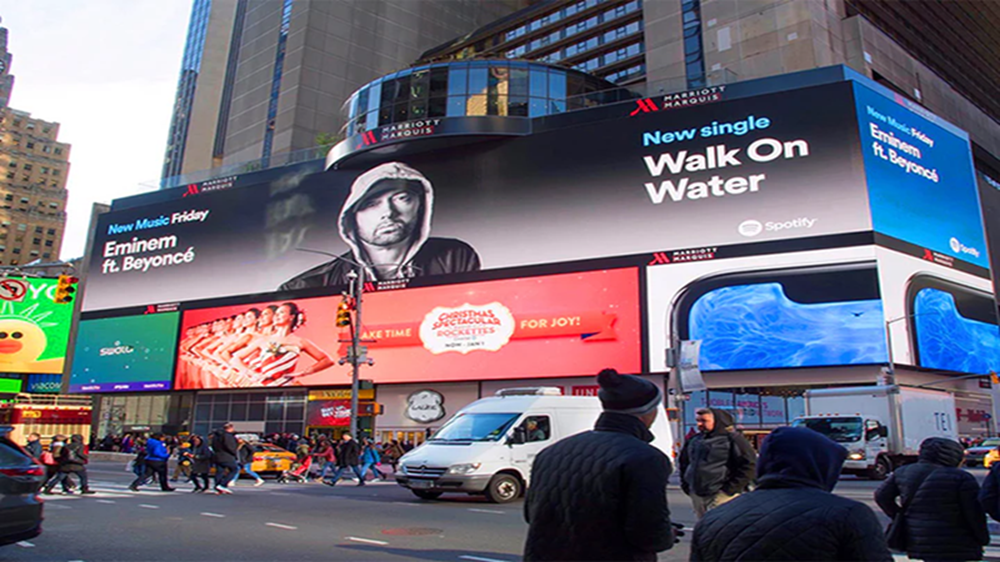LED screens are an ideal investment for advertising, signage, and home viewing. They provide superior visual quality, higher brightness, and lower energy consumption. However, like all electronic products, LED screens have a limited lifespan after which they will fail.
Anyone purchasing an LED screen hopes it will last as long as possible. While it cannot last forever, with proper care and regular maintenance, its lifespan can be extended.
In this article, we take a closer look at the lifespan of LED screens, the factors that influence it, and practical tips to maximize their longevity.
General Lifespan of LED Screens
The lifespan of an LED display is crucial for any investor. The most common place to find related information is the specification sheet. Typically, the lifespan ranges from 50,000 to 100,000 hours—roughly ten years. While it’s easy to assume this number represents the screen’s actual lifespan, that’s not entirely correct.
This figure only considers the display panel itself and the brightness of the diodes. It is misleading because other factors and components also affect the screen’s overall longevity. Damage to these parts may render the screen unusable.
There are many reasons why LED screens are becoming increasingly popular. One major reason is that their lifespan is generally longer than traditional displays. For example, LCD screens last around 30,000 to 60,000 hours, while cathode-ray tube (CRT) screens last only 30,000 to 50,000 hours. In addition, LED screens are more energy-efficient and deliver better video quality.
Different types of LED screens have slightly different lifespans, which usually depend on where and how they are used.
Outdoor screens typically have a shorter lifespan since they require higher brightness levels, which accelerate diode aging. Indoor screens, by contrast, use lower brightness and are shielded from weather conditions, so they last longer. Commercial LED screens, however, are often in continuous use, which leads to faster wear and a shorter lifespan.
Factors Affecting the Lifespan of LED Screens
Although manufacturers claim their screens last as long as specified, this is often not the case. External factors cause performance to degrade gradually over time.
Here are the main factors that affect LED lifespan:
Application/Usage
The way an LED screen is used greatly impacts its longevity. For example, brightly colored advertising screens usually wear out faster than others. Bright colors require more power, which raises the screen’s temperature. Higher heat affects internal components, reducing their performance.
Heat and Temperature
LED screens contain multiple electronic components, including control boards and chips. These are vital to performance and only function optimally within certain temperatures. Excessive heat can cause them to fail or degrade. Damage to these components ultimately shortens the screen’s lifespan.
Humidity
Although most LED displays can withstand high humidity, moisture can damage certain internal parts. It can seep into ICs, causing oxidation and corrosion. Humidity may also damage insulation materials, leading to internal short circuits.
Dust
Dust can accumulate on internal components, forming a layer that blocks heat dissipation. This raises internal temperatures, affecting component performance. Dust can also absorb moisture from the environment, corroding electronic circuits and causing malfunctions.
Vibration
LED screens are exposed to vibrations and shocks, especially during transport and installation. If vibrations exceed certain limits, they increase the risk of physical damage to components. In addition, they can allow dust and moisture to penetrate the screen.
Practical Tips to Extend the Lifespan of LED Screens
With proper care, LED screens can last far longer than the manufacturer’s estimate. Here are some practical tips to help prolong their lifespan:
-
Provide Proper Ventilation
Overheating is a serious problem for all electronics, including LED screens. It can damage components and shorten lifespan. Proper ventilation allows hot and cold air to circulate and release excess heat. Leave enough space between the screen and the wall to allow airflow. -
Avoid Touching the Screen
This may sound obvious, but many people still touch or mishandle LED screens. Touching the screen without protective gloves can damage delicate parts. Mishandling may also cause physical impact damage. Always follow the manufacturer’s instructions when operating the device. -
Protect from Direct Sunlight
Direct sunlight can cause overheating. It raises the temperature beyond recommended levels and forces higher brightness settings for visibility, which increases power consumption and heat. -
Use Surge Protectors and Voltage Regulators
These ensure the LED display receives stable power. Surge protectors neutralize short-term voltage spikes and filter electrical noise and electromagnetic interference. Voltage regulators counter long-term fluctuations to maintain stability. -
Avoid Corrosive Cleaners
Cleaning is important to remove dirt, dust, and debris, but cleaning solutions must meet manufacturer standards. Some solutions are corrosive and may damage circuits. Always check the manual for approved cleaning methods and tools.
Lifespan of Other LED Products
Different LED products vary in longevity depending on design, quality, operating conditions, and manufacturing process. Examples include:
-
LED Bulbs: About 50,000 hours
-
LED Tubes: About 50,000 hours
-
LED Street Lights: 50,000–100,000 hours
-
LED Stage Lights: Up to 50,000 hours
Keep in mind that lifespan varies by brand, quality, and maintenance.
Conclusion
The lifespan of LED display screens is generally around 60,000–100,000 hours, but proper maintenance and operation can extend it further. Store the display properly when not in use, use recommended cleaning products, and ensure optimal environmental conditions. Most importantly, follow the manufacturer’s guidelines so your display can last for many years.
Post time: Aug-25-2025

